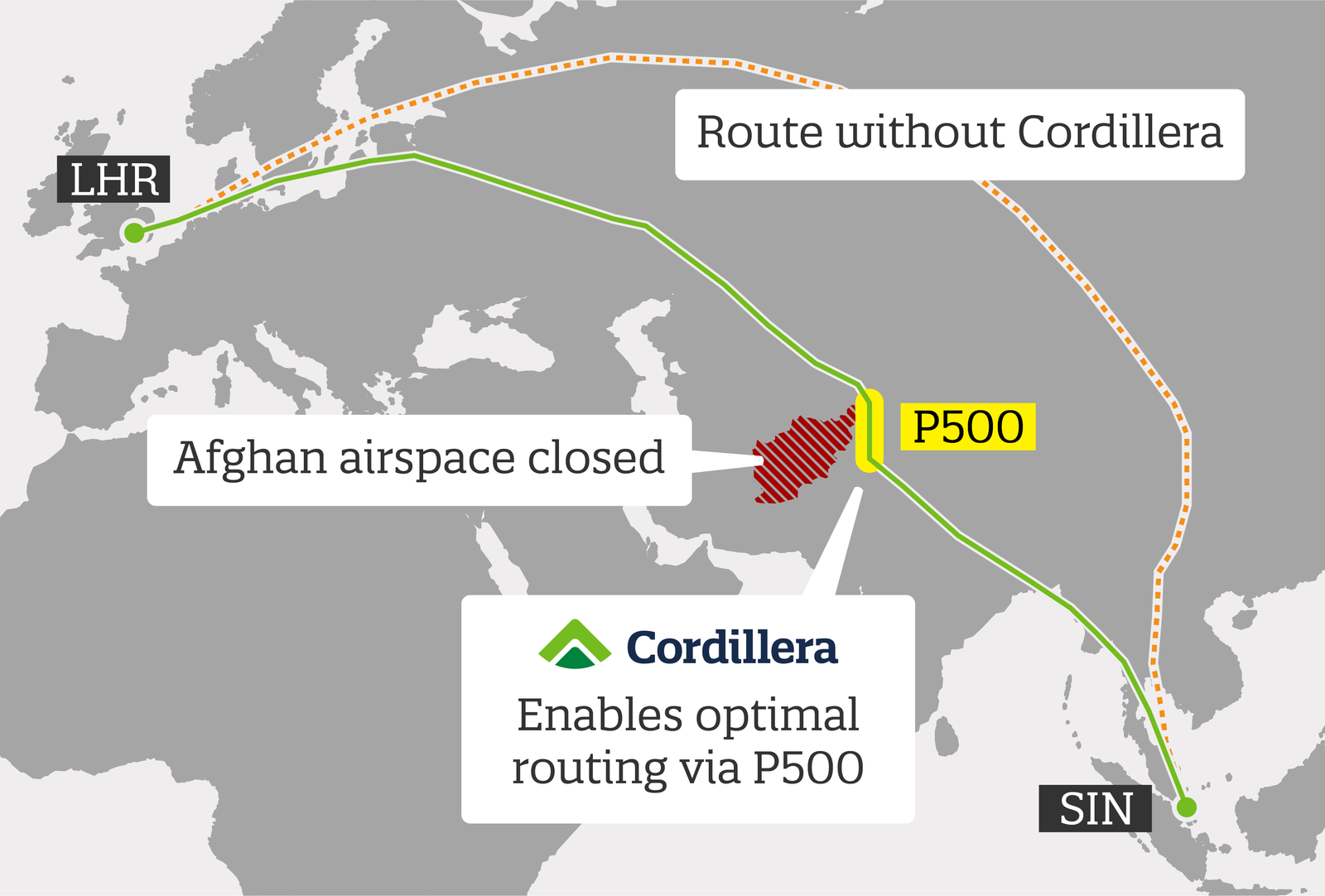Airspace closures over Afghanistan: How can airlines manage the effects?

By Patrick Brown, Head of Product & People, Caeli Nova
In order to ensure the safety of air travel between Asia and Europe, EASA and the main aviation authorities worldwide have restricted all flying over Afghanistan in light of its change in regime. The only exception to this is the use of airways P500 and G500 over the narrowest stretch of the Wakhan corridor, a strip of Afghan land that reaches into Tajikistan, Pakistan and China.
To comply with these airspace restrictions and to keep passengers and crew safe, current airline procedures have routed flights to the north or south of Afghanistan, with eastbound journeys flying over Mongolia and westbound journeys flying over Saudi Arabia. These circumnavigated routes significantly extend time in the air for long-haul flights, consuming more fuel, and producing more emissions for a range of airlines operating across Europe and Asia.
The costs incurred by longer, less efficient routes come at a time when airlines are dually strained by a dramatic loss of revenue during the Covid-19 pandemic and an anticipated rise in fuel prices in 2022. As airspace restrictions over Afghanistan are likely to remain in place for an extended period, as they have in Ukraine, they will continue to impact airline operations across the region in the long term. What long-haul airlines need now are actionable solutions that keep flights as cost and fuel-efficient as possible, while ensuring the safety of those onboard.
The key to finding this combination is making use of more direct routes in the region that are typically inaccessible due to high terrain. The use of airways Y1 and L888 could provide significantly more efficient passage through Asia, letting flights access a more direct route around Afghanistan. Cordillera, Caeli Nova’s launch product, allows airlines to utilise these routes by enabling the aircraft to maintain a higher altitude for an extended duration during a cabin decompression emergency. This benefit also extends to flights routed along airways P500 and G500 through Afghanistan’s Wakhan corridor, which are inaccessible to many aircraft due to the limitations of their oxygen systems.

The difference this capability can make for airlines is unmistakable. Longer flights have an impact on several areas of an airline operations – higher fuel consumption, longer duty hours of flight crew, increased maintenance requirements – all resulting in higher costs for the operator. Beyond the business case for this high-altitude alternative is its environmental impact. Put simply, more direct routes equates to shorter flights and less fuel burn. This means long-haul flights to Lahore, Islamabad, Delhi, and Kathmandu – just to name a few – can become cleaner and cheaper while sparing passengers the frustration of a longer travel time. Cordillera provides a safe and cost-effective solution that can allow airlines to continue to recover and thrive in the wake of pandemic losses.
- 03/29/22 03 2022 Providing route flexibility to airlines in uncertain times
- 07/20/21 07 2021 What are the world’s most challenging routes and airport approaches?
- 10/03/22 10 2022 MRO Business Today | Press Coverage
- 06/14/22 06 2022 Caeli Nova wins Cabin Systems category at the Crystal Cabin Awards
- 06/14/22 06 2022 Aviation Week | Press Coverage